- Region
- Águilas
- Alhama de Murcia
- Jumilla
- Lorca
- Los Alcázares
- Mazarrón
- San Javier
-
ALL AREAS & TOWNS
- AREAS
- SOUTH WEST
- MAR MENOR
- MURCIA CITY & CENTRAL
- NORTH & NORTH WEST
- TOWNS
- Abanilla
- Abarán
- Aguilas
- Alamillo
- Alcantarilla
- Aledo
- Alhama de Murcia
- Archena
- Balsicas
- Blanca
- Bolnuevo
- Bullas
- Cañadas del Romero
- Cabo de Palos
- Calasparra
- Camping Bolnuevo
- Campo De Ricote
- Camposol
- Canada De La Lena
- Caravaca de la Cruz
- Cartagena
- Cehegin
- Ceuti
- Cieza
- Condado de Alhama
- Corvera
- Costa Cálida
- Cuevas De Almanzora
- Cuevas de Reyllo
- El Carmoli
- El Mojon
- El Molino (Puerto Lumbreras)
- El Pareton / Cantareros
- El Raso
- El Valle Golf Resort
- Fortuna
- Fuente Alamo
- Hacienda del Alamo Golf Resort
- Hacienda Riquelme Golf Resort
- Isla Plana
- Islas Menores & Mar de Cristal
- Jumilla
- La Azohia
- La Charca
- La Manga Club
- La Manga del Mar Menor
- La Pinilla
- La Puebla
- La Torre
- La Torre Golf Resort
- La Unión
- Las Palas
- Las Ramblas
- Las Ramblas Golf
- Las Torres de Cotillas
- Leiva
- Librilla
- Lo Pagan
- Lo Santiago
- Lorca
- Lorquí
- Los Alcázares
- Los Balcones
- Los Belones
- Los Canovas
- Los Nietos
- Los Perez (Tallante)
- Los Urrutias
- Los Ventorrillos
- Mar De Cristal
- Mar Menor
- Mar Menor Golf Resort
- Mazarrón
- Mazarrón Country Club
- Molina de Segura
- Moratalla
- Mula
- Murcia City
- Murcia Property
- Pareton
- Peraleja Golf Resort
- Perin
- Pilar de la Horadada
- Pinar de Campoverde
- Pinoso
- Playa Honda
- Playa Honda / Playa Paraíso
- Pliego
- Portmán
- Pozo Estrecho
- Puerto de Mazarrón
- Puerto Lumbreras
- Puntas De Calnegre
- Region of Murcia
- Ricote
- Roda
- Roldan
- Roldan and Lo Ferro
- San Javier
- San Pedro del Pinatar
- Santiago de la Ribera
- Sierra Espuña
- Sucina
- Tallante
- Terrazas de la Torre Golf Resort
- Torre Pacheco
- Totana
- What's On Weekly Bulletin
- Yecla


- EDITIONS:
 Spanish News Today
Spanish News Today
 Alicante Today
Alicante Today
 Andalucia Today
Andalucia Today
Archaeological Museum Murcia
Museo Arqueológico de Murcia, Murcia
The Archaeological museum is a veritable treasure trove and holds a remarkable collection of finds from sites across the region, laid out in a logical and carefully considered display.
It aims to show the pre-historic occupation of the modern-day Murcia Region from the Paleolithic to the pre-Moorish occupation of the 7th century and divides the exhibits up into prehistoric on the ground floor and Iberian onwards on the first floor.
The museum has a stylish café area outside which is popular and well supported.
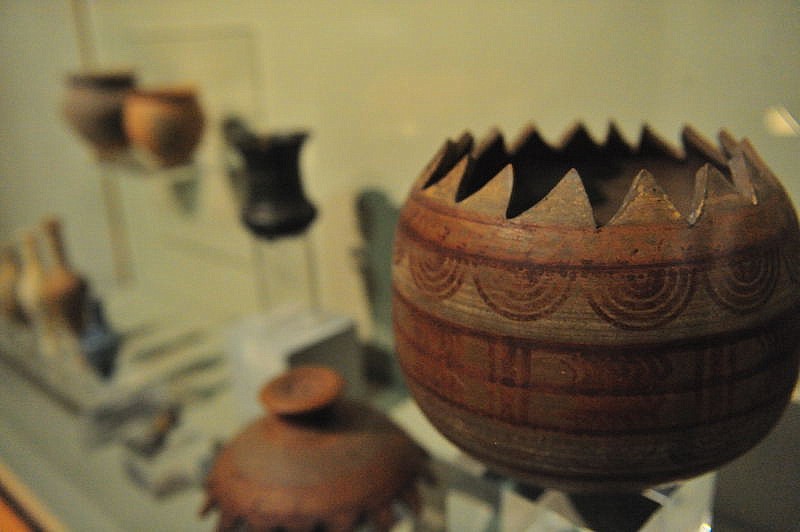
All of the display boards are in Spanish, but if you ask at the entrance desk, the museum has produced an excellent information booklet in English which explains the basics of each of the rooms in turn.
The Region of Murcia has an astonishing number of archaeological sites - over 2000 in total and lists some of the most important sites in Europe, including the Sima de las Palomas in Torre Pacheco, which has important Neanderthal remains , the Cueva Victoria in Cartagena with some of the oldest human remains in existence, prehistoric art in many locations across the region and important Iberian settlements including Moratalla, the sanctuary of La Luz, Mula, Jumilla and Murcia.
The ground floor of the museum holds collections of Pre-historic material and uses audio-visual presentations to really bring the processes used by these early humans to life. Its often difficult looking at pre-historic collections to really appreciate the skill required to fashion these items from natural materials without the assistance of the tools and mechanical assistance we take so much for granted today.
Even the process of making fire, and the gradual evolution from bone and flint to ceramics and the skills to work metal are shown in fascinating detail and the exhibits on show are of superb quality.
The museum boasts a substantial collection of Iberian artifacts, recovered from several large-scale sites such as those at El Cigarralejo in the Mula municipality and others in Cehegín, Jumilla, Los Nietos, Cartagena and Caravaca de la Cruz, including sculptural pieces, ceramics, weapons and agricultural implements.
The Argaric culture flourished in this area of southern Spain with settlements in many locations, amongst the most significant of which was La Bastida in Totana, which yielded a large quantity of distinctive blackened ceramics in a set variety of forms, which are repeated in all of the settlements, indicating a strong degree of uniformity and communication between the inhabitants.
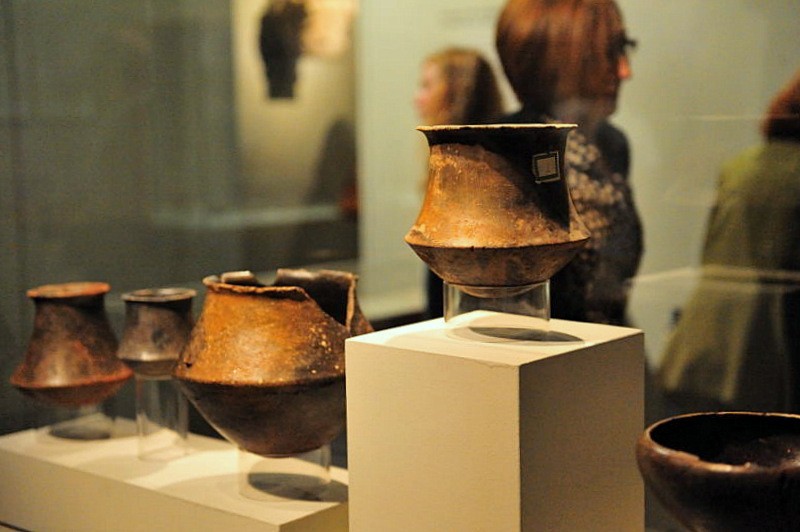
The indigenous Bronze Age population of the region ( Iberians) were subjected to new arrivals from trading nations as the Phoenicians arrived to trade, bringing their Mediterranean influences and creating a new, dynamic society which evolved into the Iberian Culture. This was enriched by the Punic Carthaginians, the Greeks and Etruscans and finally the Romans, in a period which lasted from the 7th century BC to the 1st century BC.
During this time trade, crafts and art flourished, as can be clearly seen in the beautifully made pieces shown in this area, with finely crafted ceramics, an amazing collection of ex-voto pieces, including some beautiful little horses and some extraordinary burial goods.
As the Romans arrived, large-scale exportation of goods from the region completely changed the economy as settlements grew and the region exported grain, esparto, fish products and metals from its rich mines, shipped marble from the north of the region to build temples and the City of Cartagena,( Cartago Nova)" romanised" the population.
Trading routes and roads criss-crossed the region, all roads leading to the rich port of Cartagena.
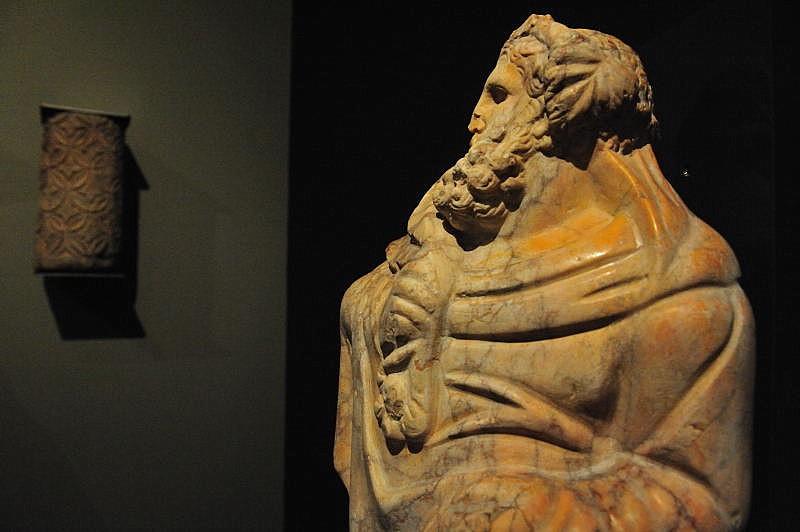
There is a superb model of Cartagena, showing the original layout of the roman city, giving an idea of just how impressive and substantial it would have been at this point in its history.
By the 5th century the Roman hold on the region was at an end and the region was subsequently occupied by the Visigoths, then the Byzantines.
One of the most stunning examples of architecture dates from this period, the mausoleum of La Alberca, and the museum houses several carved columns from this site, which are quite astonishing in their craftsmanship and beauty.
Finally in 713 Murcia was taken by the Moors, who remained in power until the 13th century when most of southern Spain fell to the kingdoms of Castilla y León and Aragón during the Reconquist. ( See History of Murcia City)
A visit to the museum ends with an audio visual presentation showing the process of archaeology and a temporary exhibition room hosts various exhibitions throughout the year.
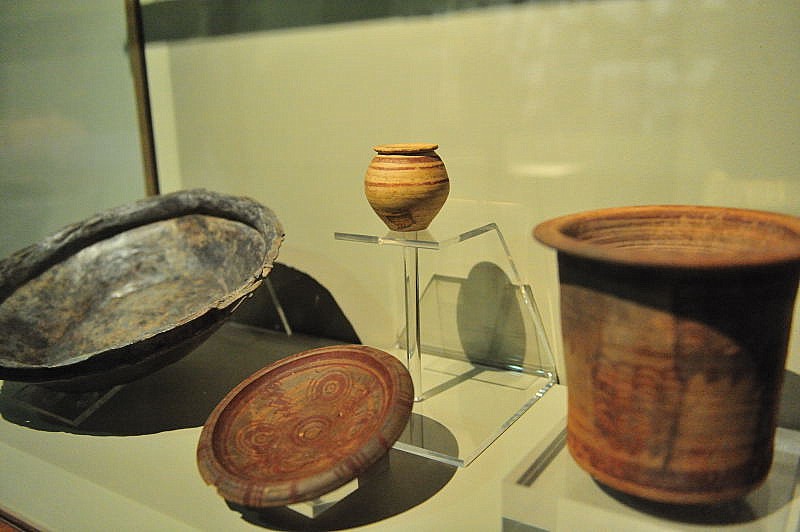
Practicalities of the Archaeological Museum, Murcia
Museo Arqueologico de Murcia
Avenida Alfonso X, number 7
Murcia
Tel 968 23 46 02
Click for map, Archaeological museum, Murcia.
This is very close to the CENTROFAMA car park and shopping centre, which is very easy to get to from the ringroad.
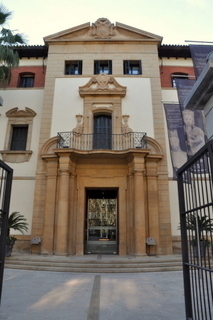 Opening Hours
Opening Hours
Tuesday-Friday 10am to 2pm and 5pm to 8pm
Saturdays 11am to 2pm and 5pm to 8pm
Sundays 11am to 2pm
Mondays closed
During July and August the museum is closed in the evenings.
24th and 31st December 11am to 2pm
Admission Free
Access
There are no problems for disabled visitors as a lift operates to the first floor and there are no steps between exhibits
It also has disabled toilet facilities.





































